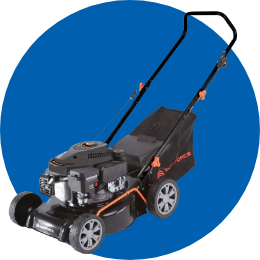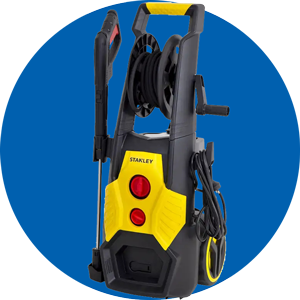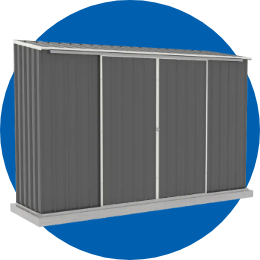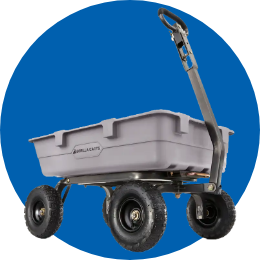- 8 September 2021
Build a handy storage seat
Build a secret garden bench
Create the perfect storage space-saver that helps contain all outdoor equipment with ease. You can store grill accessories, seat pillows, and toys.
Your Materials Checklist
- Seat 2 x 1440mm x 190mm x 19mm treated pine (CTS) 1 x 1440mm x 70mm x 19mm treated pine (CTS) 3 x 420mm x 70mm x 35mm treated pine (CTS) 3 x 420mm x 70mm x 35mm treated pine (CTS)
- Seat trims 1 x 1500mm x 50mm x 19mm treated pine (CTS)
- Seat front 2 x 150mm x 140mm x 19mm treated pine (CTS) 1 x 1500mm x 190mm x 19mm treated pine (CTS) 4 x 475mm x 70mm x 35mm treated pine (CTS) 3 x 450mm x 70mm x 35mm treated pine (CTS)
- Seat back 8 x 1000mm x 140mm x 19mm treated pine (CTS) 2 x 1000mm x 190mm x 19mm treated pine (CTS) 3 x 1500mm x 70mm x 35mm treated pine (CTS) 2 x 320mm x 70mm x 35mm treated pine (CTS)
- Seat sides 2 x 770mm x 190mm x 19mm treated pine (CTS) 2 x 660mm x 19mm x 19mm treated pine (CTS) 2 x 660mm x 140mm x 19mm treated pine (CTS) 2 x 450mm x 70mm x 35mm treated pine (CTS) 4 x 405mm x 70mm x 35mm treated pine (CTS)
- Additional framing 4 x 400mm x 42mm x 19mm pine (CTS) 2 x 1390mm x 42mm x 19mm pine (CTS)
- Exterior grade plywood to cover area measuring 405 mm x 1415 mm (CTS)
- Two packets of countersink treated pine screws
- Construction adhesive (e.g. liquid nails)
- 4 x 70 mm easy to fit galvanised hinges
- Sandpaper – medium and fine
- Exterior timber filler
- Finish – exterior grade paint recommended
Handy hints to make the job easier
- To weather protect the timber that butts up against other sections of timber, stain or paint them first before fixing together.
- When cutting several pieces of timber to exactly the same length, such as the treads, you will get more accurate results by clamping them together and measuring them as one. That way, even if you’re a fraction out, the pieces will still all be identical.
- Clamps can mark the surface of timber. Prevent this by placing a scrap block of timber on either side of the pieces to be clamped and under the jaws of the clamp.
- Use non-corroding galvanised screws and hinges to fix your seat together. Ordinary hardware will rust and stain the timber.
- Some Mitre 10 stores do have a cutting service. However, if your local store does not have a cutting service, they may be able to order the material cut to size (CTS). In some instances this may not be possible, so check with your friendly Mitre 10 staff member.
As the seat component parts are made up separately and then assembled, this plan is broken into each part. All visible pieces of timber have been planned on the edge to create a bevelled angle. This gives the garden seat a uniform appearance despite the natural inconsistencies of timber.
Step 1: Seat
Plane the upper edges of both the 190mm and 70mm pieces, and sandwich the 70mm piece between the two 190mm pieces, the planed edges face down. Fix the three 70mm x 35mm framing pieces as shown (Fig. 1). When these are in place, install the three 450mm framing pieces along the very bottom of the seat front, fixing as shown.


Step 2: Seat front
Plane the outer edges of all the 1500mm pieces of timber, then lay the planed edges down with the I90mm piece sandwiched between the two 140mm lengths. Fix the four supporting 475mm x 70mm x 35mm framing pieces as shown (Fig. 2). When these are in place, install the three 450mm framing pieces along the very bottom of the seat front, fixing as shown.


Step 3: Seat Sides
This is the only part of the seat with two identical parts. Take the 770mm long pieces of 190mm timber and mark them up as per Fig. 3, trimming them to size with the jigsaw, ensuring you create a curved edge of the upper corner to match the rounded style of the seat. Now separate the components into each chair-side – it’s important that you create mirror images and not two exact replicas. You should have trimmed 770mm x 190mm length, one 660mm x 140mm and one 660mm x 190mm on each side arranged in that order. All the edges of these pieces should be planed before you proceed any further, as both sides will be on view in the finished seat. Fix two 350mm x 70mm framing pieces to each side, fixing as shown (Fig. 3). Ensure there is 35mm clearance at either end to allow for the framing supports of the front and back seat components. Although you will fix the armrests last, it pays to confirm their fit at this stage. Using the measurements in Fig. 6, create a 20mm deep rebate with your Jig Saw to create the channel to insert the arm into the back piece of the chairside. Sand back any dressing ridges in the 35mm to 70mm timber used to create the arms until they are smooth, and test their fit by installing on the appropriate side. Once the armrests are flush, rest aside for later.




Step 4: Seat back
Plane all the outer edges of the timber only to the point marked in Fig. 4. Do not plane below this point as it will create an entry point for moisture into the storage chest part of the seat. The curved back of the seat is not cut until all the framing is place.
Lay all the 19mm seatback pieces, planed side up, in the order shown in Fig. 4, ensuring that they fit snugly against one another and rearranging if need be to achieve this. Fix the bottom and top framing 70mm x 35mm pieces at the points shown in Fig. 4, using 2 screws per paling in both the top and bottom piece. Flip the seat back and reinforce the framing with a third support, as shown in Fig. 5, again fixing with 2 screws per paling. Now that all the framing pieces are in place, use your tape measure to mark up the curved back of the chair. Mark the first 140mm wide piece at either end of seat back at 690mm, and trim using the jigsaw. Find the midpoint of the 1500mm seat back and mark it. The curved graduates from this point down on either side to meet the edge of the straight cut outer 140mm pieces. Use a piece of string centred in the very middle of the seat back and tied to your pencil to ensure your curve is symmetrical and smooth. Trim along you pencil line to create the curve. You may choose to create a square, or more rectangular shaped back – the choice is yours as long as you don’t dip below the back support frame. Lastly, install the two 320mm x 70mm x 35mm side frame supports at either end, as shown in Fig. 3.






Step 5: Assemble the pieces
We are now ready to assemble the component pieces. Ask a friend or family member to help you hold the pieces in place as you fix the seat front between the two seat sides, screwing through the seat sides into the support frames of the seat front. With this U-shaped frame in place, fix the back panel between the two side pieces in the same way.
Step 6: Install the seat
Take up the 1500mm x 50mm x 19mm length of the seat trim, and fix it to the upper front frame of the seat back. The four hinges should now be installed onto this trim and to the edge of the seat. On the inside of each bench side, fix one of the 400mm x 42mm x 19mm additional framing pieces flush with the upper edge of the side frame, Fig. 7. This will provide additional support to the seat when closed. Lastly, complete the trim by installing the two side 450mm x 19mm x 30mm strips of seat trim (Fig. 7), in the gap between the seat edge and side pieces. You should now have a single, flat surface for the seat.


Step 7: Install the base
Install the remaining additional framing pieces against the bottom framing pieces of the seat so that they are flush with the very bottom of the seat. The plywood should simply drop down onto these framing pieces and sit flush with the inside walls of the seat. You may wish to fix it to the seat with the construction adhesive, but we advise leaving it to simply sit in the base, giving you the flexibility of removing it for cleaning if necessary.


Step 8: Fix the armrests
With the rest of the bench now complete, fix the armrests in place using the construction adhesive.
Step 9: Finishing the bench
Fill all holes with an exterior grade timber filler and sand back any rough edges. Because your bench is made from treated pine, it will last for many years, but you might wish to help preserve it further and enhance its appearance by treating it with an appropriate finish. If you’re storing outdoors ensure you use an exterior grade product that will hold up well against the rigours of the harsh Australian climate – talk to the people at your local Mitre 10 store if you need advice.






















